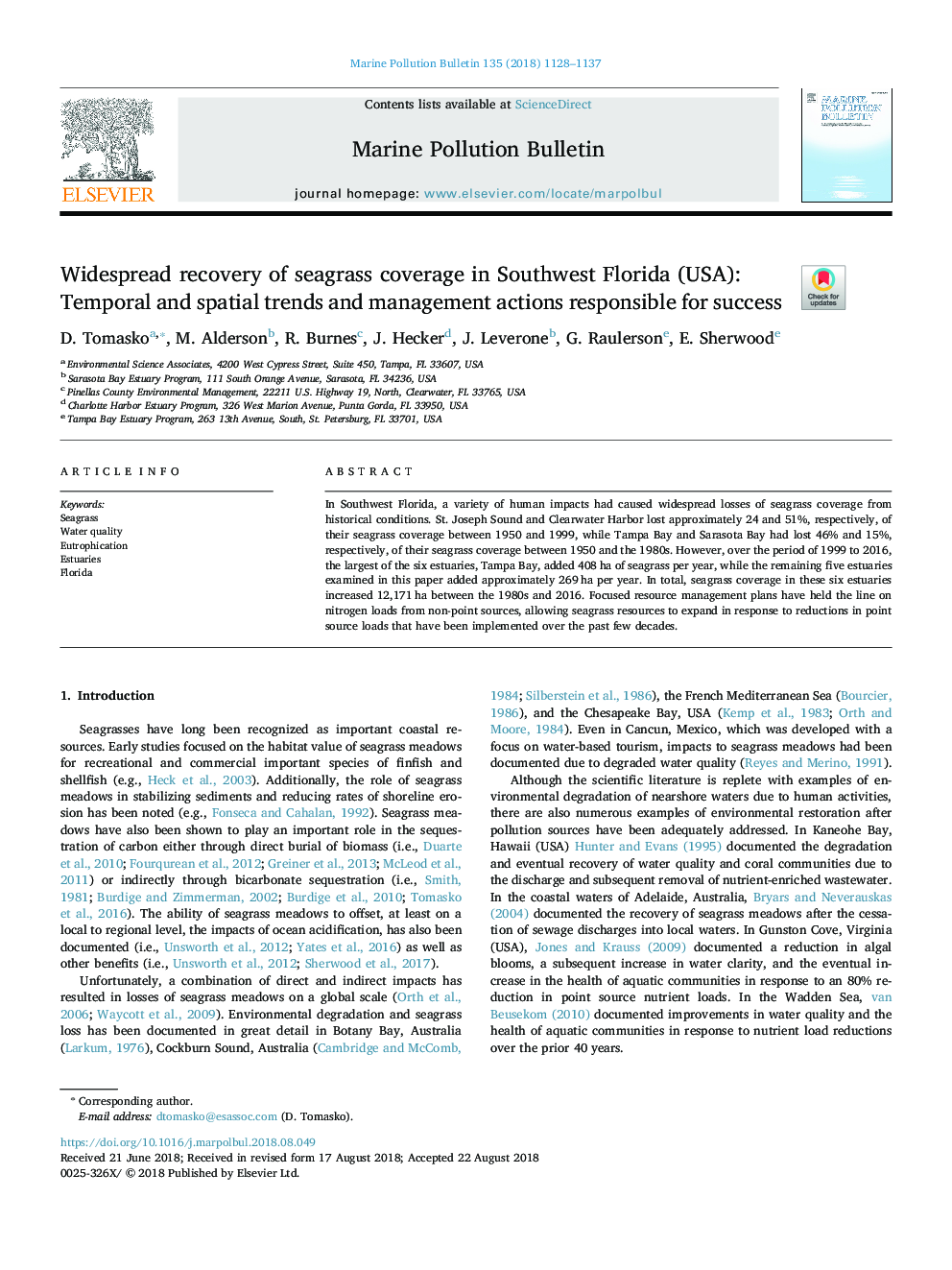| Article ID | Journal | Published Year | Pages | File Type |
|---|---|---|---|---|
| 10115887 | Marine Pollution Bulletin | 2018 | 10 Pages |
Abstract
In Southwest Florida, a variety of human impacts had caused widespread losses of seagrass coverage from historical conditions. St. Joseph Sound and Clearwater Harbor lost approximately 24 and 51%, respectively, of their seagrass coverage between 1950 and 1999, while Tampa Bay and Sarasota Bay had lost 46% and 15%, respectively, of their seagrass coverage between 1950 and the 1980s. However, over the period of 1999 to 2016, the largest of the six estuaries, Tampa Bay, added 408â¯ha of seagrass per year, while the remaining five estuaries examined in this paper added approximately 269â¯ha per year. In total, seagrass coverage in these six estuaries increased 12,171â¯ha between the 1980s and 2016. Focused resource management plans have held the line on nitrogen loads from non-point sources, allowing seagrass resources to expand in response to reductions in point source loads that have been implemented over the past few decades.
Related Topics
Physical Sciences and Engineering
Earth and Planetary Sciences
Oceanography
Authors
D. Tomasko, M. Alderson, R. Burnes, J. Hecker, J. Leverone, G. Raulerson, E. Sherwood,
